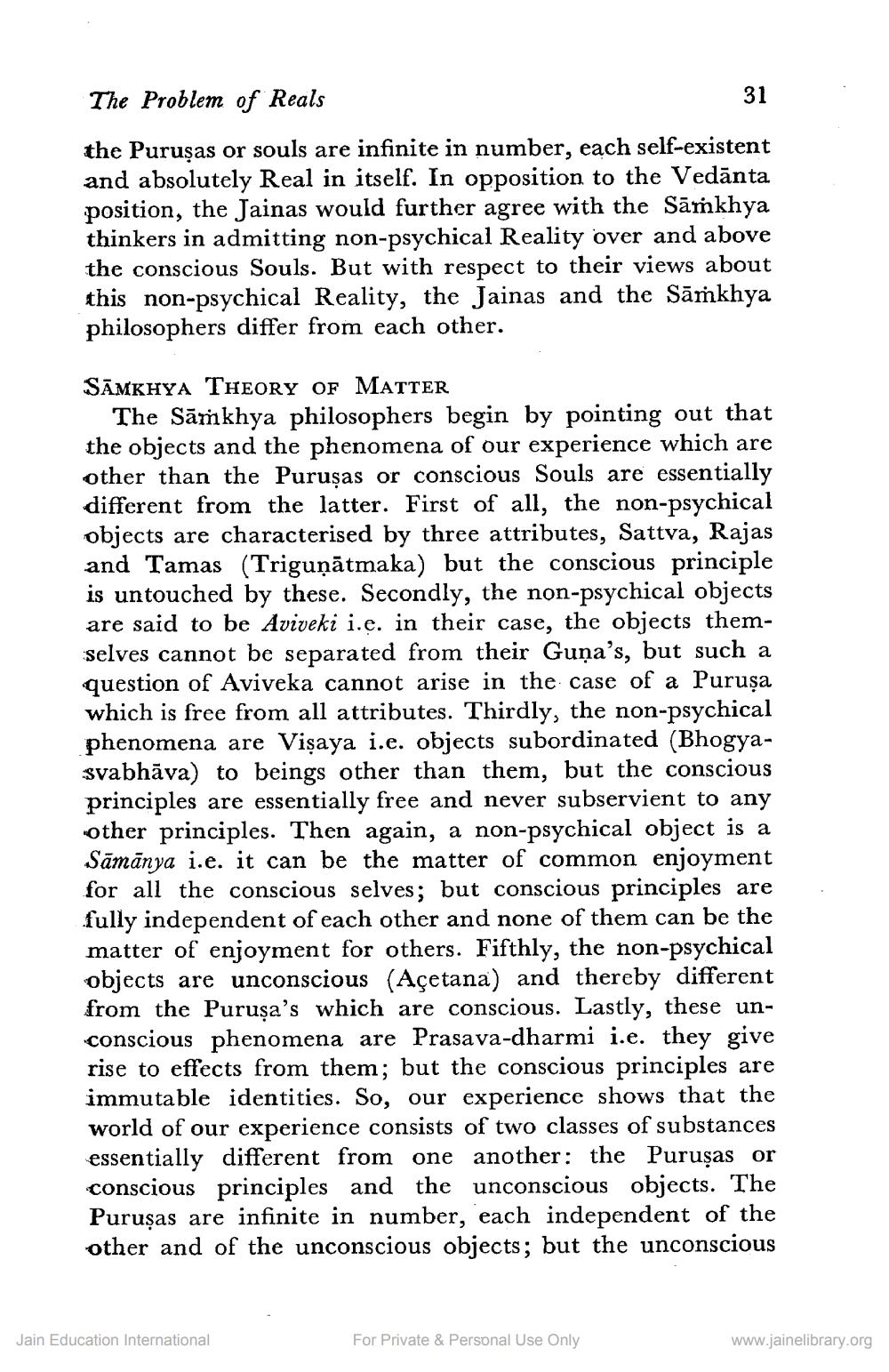________________
The Problem of Reals
31
the Purusas or souls are infinite in number, each self-existent and absolutely Real in itself. In opposition to the Vedānta position, the Jainas would further agree with the Sāmkhya thinkers in admitting non-psychical Reality over and above the conscious Souls. But with respect to their views about this non-psychical Reality, the Jainas and the Sāṁkhya philosophers differ from each other.
SĀMKHYA THEORY OF MATTER
The Sāṁkhya philosophers begin by pointing out that the objects and the phenomena of our experience which are other than the Purusas or conscious Souls are essentially different from the latter. First of all, the non-psychical objects are characterised by three attributes, Sattva, Rajas and Tamas (Triguṇātmaka) but the conscious principle is untouched by these. Secondly, the non-psychical objects are said to be Aviveki i.e. in their case, the objects themselves cannot be separated from their Guņa's, but such a question of Aviveka cannot arise in the case of a Purusa which is free from all attributes. Thirdly, the non-psychical phenomena are Visaya i.e. objects subordinated (Bhogyasvabhāva) to beings other than them, but the conscious principles are essentially free and never subservient to any other principles. Then again, a non-psychical object is a Sāmānya i.e. it can be the matter of common enjoyment for all the conscious selves; but conscious principles are fully independent of each other and none of them can be the matter of enjoyment for others. Fifthly, the non-psychical objects are unconscious (Açetana) and thereby different from the Puruşa’s which are conscious. Lastly, these unconscious phenomena are Prasava-dharmi i.e. they give rise to effects from them; but the conscious principles are immutable identities. So, our experience shows that the world of our experience consists of two classes of substances essentially different from one another: the Puruşas or conscious principles and the unconscious objects. The Puruşas are infinite in number, each independent of the other and of the unconscious objects; but the unconscious
Jain Education International
For Private & Personal Use Only
www.jainelibrary.org




